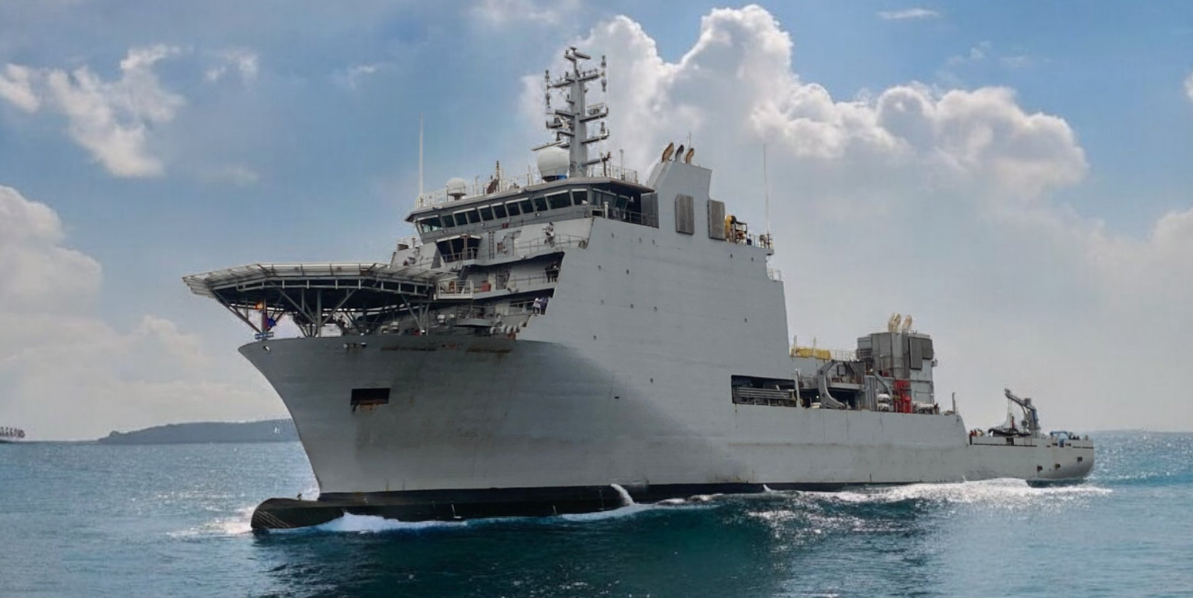Polypropylene and Bioethanol Initiatives in Assam

- 19 Sep 2025
In News:
Prime Minister Narendra Modi recently laid the foundation stone for a Polypropylene (PP) Plant and inaugurated a Bioethanol Plant at Numaligarh Refinery Limited (NRL) in Golaghat, Assam. These projects mark a major step in strengthening India’s energy security, promoting clean energy, and enhancing industrial development in the Northeast.
About Polypropylene
Polypropylene (PP) is a thermoplastic polymer produced by the polymerization of propylene. Belonging to the polyolefin family, it is a lightweight, flexible, and heat-resistant material widely used in modern industries.
Key Properties:
- Chemical resistance: Highly resistant to acids, alkalis, and solvents, making it ideal for packaging cleaning products.
- Lightweight and durable: One of the lightest commodity plastics, suitable for high-temperature applications.
- Flammable: Requires controlled processing and handling.
- Insulating properties: Offers strong electrical insulation, used in casings, cables, and medical equipment.
Applications:
Polypropylene is extensively used in packaging, textiles, ropes, carpets, medical kits, automotive components, and agricultural tools. Its versatility makes it integral to both industrial and domestic use.
About the Polypropylene Plant at NRL
The Polypropylene Plant at Numaligarh Refinery aims to enhance India’s petrochemical capacity and reduce dependence on imports. It will serve as a key catalyst for industrial growth in Assam and contribute to the ‘Make in Assam’ and ‘Make in India’ initiatives.The plant will:
- Generate significant employment opportunities for the local population.
- Strengthen manufacturing sectors linked to plastics, textiles, and medical equipment.
- Promote regional economic diversification in the Northeast.
The Bioethanol Plant and Clean Energy Push
The newly inaugurated Assam Bioethanol Plant, also at NRL, produces bioethanol from bamboo—a sustainable feedstock abundantly available in the region. This initiative supports India’s Ethanol Blending Programme and aims to reduce reliance on imported fossil fuels.
Key Benefits:
- Encourages bamboo cultivation, benefitting farmers and tribal communities.
- Establishes bamboo chipping units and ensures steady raw material supply.
- Generates employment for thousands of people and boosts the rural economy.
- Promotes green energy and circular economy principles.
The government has allocated around ?200 crore annually to support bamboo-based ethanol production, which will provide a long-term economic boost to the region.
Strategic Significance
Prime Minister Modi emphasized that energy and semiconductors are two critical pillars of India’s self-reliance journey. Assam, through projects like these, is emerging as a key energy hub.
- India is now among the top five countries in solar power capacity.
- The government has launched the National Deepwater Exploration Mission to explore domestic oil and gas reserves under the “Samudra Manthan” initiative.
- A semiconductor factory worth ?27,000 crore is being set up in Morigaon, positioning Assam as a vital node in India’s electronics manufacturing ecosystem.
Cultural and Socio-Economic Integration
Beyond industrial growth, these projects are part of a broader vision to integrate Assam’s cultural heritage with modern development. The state’s traditional identity—symbolized by the Gamosa, Eri, and Muga silk—will now extend to polypropylene-based textiles and industries.
Initiatives such as Mission Basundhara, welfare schemes for tea garden workers, and the development of tourism circuits like the MaaKamakhya Corridor underscore inclusive growth in the region.
Centre for Cellular and Molecular Biology
- 19 Sep 2025
In News:
Scientists at the CSIR–Centre for Cellular and Molecular Biology (CCMB), Hyderabad, have uncovered a crucial mechanism explaining how white blood cells (WBCs) rapidly alter their internal structure to combat pathogens. The discovery reveals how immune cells adapt their cytoskeletons to move and respond swiftly during immune defence.
The Discovery
A research team led by Dr. Saikat Chowdhury at CCMB discovered how white blood cells form flat protrusions in the direction of pathogens, enabling them to move and engulf harmful microbes.
This process occurs within microseconds, allowing immune cells to dynamically remodel their internal structure to execute defence responses. The findings were published in the journal Nature Structural & Molecular Biology.
Mechanism Behind the Discovery:
- The shape and movement of cells depend on a dense, branched actin network near the cell membrane.
- Actin, a structural and dynamic protein, enables cells to push the membrane outward, forming protrusions.
- The CCMB team found that SPIN90, a regulatory protein, plays a pivotal role in generating new actin meshworks.
- SPIN90 works as a dimer with another protein complex, Arp2/3, to initiate the growth of new actin filaments in two opposite directions, separated by about 150°.
- These newly formed filaments serve as scaffolds, helping the cell reshape itself or move toward invading pathogens.
According to Dr. Chowdhury, SPIN90’s ability to build actin filaments bidirectionally helps cells create adaptable cytoskeletal frameworks, shedding light on how cells remodel themselves in both health and disease.
Scientific Significance
This discovery enhances understanding of:
- Cellular movement and immune response mechanisms.
- Cytoskeletal dynamics—a core process in cellular biology.
- Pathophysiological processes, such as cancer metastasis, immune disorders, and wound healing, where cell shape and motility are crucial.
It also opens new avenues for biomedical research in designing therapies that target cell motility and immune regulation.
About the CSIR–Centre for Cellular and Molecular Biology (CCMB)
- Established: 1977
- Location: Hyderabad, Telangana
- Parent Organization: Council of Scientific and Industrial Research (CSIR) under the Ministry of Science & Technology, Government of India
- Designation: UNESCO-recognized “Centre of Excellence” under the Global Molecular and Cell Biology Network
Mandate and Objectives:
- Conduct high-quality basic and applied research in frontier areas of modern biology.
- Promote centralized national facilities for cutting-edge biological research.
- Provide training and capacity-building for students and scientists in molecular biology, genomics, proteomics, and bioinformatics.
- Facilitate collaborations with national and international research institutions.
Research Areas:
- Genetics and Genomics
- Molecular Medicine and Biotechnology
- Immunology and Cell Biology
- Bioinformatics and Systems Biology
- Environmental and Agricultural Biotechnology
CCMB’s research integrates fundamental and translational science, addressing challenges in human health, agriculture, and environmental sustainability.
Doctrine of Escheat

- 19 Sep 2025
In News:
The Supreme Court of India has recently ruled that a State Government cannot invoke the Doctrine of Escheat under Section 29 of the Hindu Succession Act, 1956, when a valid Will has been executed and probate has been granted by a competent court. The judgment underscores that the principle of escheat applies only as a last resort, when an individual dies intestate (without a Will) and without legal heirs.
What is the Doctrine of Escheat?
The Doctrine of Escheat is a long-standing legal principle ensuring that no property remains ownerless. When a person dies without a Will and without any legal heirs, ownership of the property reverts to the State.
This doctrine safeguards social and legal order, ensuring that property does not remain unclaimed or misused.
Situations Covered Under Escheat:
- Death without a Will (Intestate): When a person dies without making a valid Will and leaves no heirs.
- Unclaimed or Abandoned Property: When ownership cannot be established for a prolonged period.
The underlying idea is that property must always have an identifiable owner, and in the absence of heirs, the State becomes the ultimate owner.
Historical Background
- The term “escheat” originates from the Old French word “eschete”, meaning “to fall to.”
- The concept dates back to the feudal system of medieval Europe, where land held by a tenant reverted to the lord if the tenant died without an heir or was convicted of crimes such as treason.
- Over time, this right passed from feudal lords to the monarch or the state, ensuring continuous control over land and preventing property from becoming ownerless.
Doctrine of Escheat in Modern Legal Systems
In contemporary jurisprudence, escheat prevents property from remaining in legal limbo. The State assumes ownership of such assets, either permanently or temporarily, until legitimate claimants are found.
Different countries have codified laws governing this process, ensuring fairness and transparency.
Doctrine of Escheat in India
In the Indian legal framework, the doctrine operates through two main provisions:
- Article 296 of the Constitution of India:Provides that any property that escheats or lacks legal ownership vests in the State or Union, depending on where the property is situated.
- Section 29 of the Hindu Succession Act, 1956:States that if a Hindu dies intestate and without any legal heirs, the property escheats to the Government, which assumes ownership subject to all legal obligations.
Supreme Court’s Observation
In the recent judgment, the Supreme Court held that:
- The Doctrine of Escheat is a remedy of last resort and cannot be invoked when a valid Will exists.
- Once a Will is probated (i.e., validated by a competent court), the State has no locus to challenge the testamentary disposition under the garb of escheat.
- The testator’s intent must prevail, and the property should devolve strictly as per the terms of the Will.
This ruling reinforces the sanctity of testamentary freedom and clarifies the limited applicability of escheat provisions.
Significance of the Ruling
- Protects Individual Property Rights: Upholds the right of individuals to dispose of their property through a valid Will.
- Limits State Overreach: Prevents arbitrary claims by the State over private property.
- Clarifies Legal Interpretation: Defines the precise scope of Section 29 of the Hindu Succession Act and Article 296 of the Constitution.
- Ensures Legal Certainty: Strengthens property succession jurisprudence in India.
Carlsberg RidgeRegion
- 19 Sep 2025
In News:
India has secured an exploration contract from the International Seabed Authority (ISA) to explore polymetallic sulphide deposits in the Carlsberg Ridge region of the north-western Indian Ocean. The agreement marks a major step in India’s pursuit of deep-sea resource development and its broader vision under the Deep Ocean Mission.
About the Agreement
- The exploration contract grants India the right to survey and explore an area of approximately 3,00,000 square kilometres in the Carlsberg Ridge, a tectonically active region rich in polymetallic sulphides — deposits containing valuable metals such as copper, zinc, gold, silver, and rare elements.
- The International Seabed Authority (ISA), an autonomous body under the United Nations Convention on the Law of the Sea (UNCLOS), regulates mineral exploration and exploitation activities in international seabed areas beyond national jurisdictions.
- This licence enhances India’s presence in seabed resource exploration, complementing its earlier exploration area for polymetallic nodules in the Central Indian Ocean Basin.
About Carlsberg Ridge
- The Carlsberg Ridge is a mid-oceanic ridge — a divergent plate boundary — located in the western Indian Ocean.
- It extends from the triple junction of the African, Indian, and Australian plates, connecting to the Mid-Indian Ridge, and runs northwest toward the Gulf of Aden.
- The ridge acts as a tectonic boundary between the Somali Plate and the Indian Plate.
- Geographical features:
- Lies at an average depth of 6,000–12,000 feet (1,800–3,600 m) below sea level.
- Rises about 7,000 feet (≈2,100 m) above the surrounding seafloor.
- Extends westward near Socotra Island, eventually linking with the East African Rift System via the Gulf of Aden.
- It is one of the most prominent mid-ocean ridge systems in the Indian Ocean, characterized by frequent seismic activity and hydrothermal vents, which are potential sources of metal-rich sulphide minerals.
Significance of the Exploration
- Strategic Resource Security:Polymetallic sulphides contain economically vital metals like copper, zinc, gold, and silver, essential for clean energy technologies, electronics, and strategic industries.
- Technological Advancement:The project supports India’s Deep Ocean Mission, fostering indigenous capability in deep-sea mining, remotely operated vehicles (ROVs), and underwater robotics.
- Scientific and Environmental Research:Exploration in the Carlsberg Ridge will advance understanding of seafloor geology, hydrothermal systems, and biodiversity in deep-sea environments.
- Geopolitical and Economic Leverage:Strengthens India’s position in global ocean governance and the blue economy, ensuring equitable access to seabed resources.
About the International Seabed Authority (ISA)
- Headquarters: Kingston, Jamaica
- Established: 1994 under UNCLOS (1982)
- Mandate: Regulates mineral-related activities in the “Area” — the seabed and ocean floor beyond national jurisdiction — ensuring that exploration and exploitation are conducted for the benefit of mankind while protecting the marine environment.
Exercise Pacific Reach 2025

- 19 Sep 2025
In News:
The Indian Navy’s latest indigenously designed and constructed Diving Support Vessel (DSV), INS Nistar, is participating in the multinational Exercise Pacific Reach 2025 in Singapore, marking a key step in strengthening India’s naval cooperation and submarine rescue capabilities.
About Exercise Pacific Reach 2025
- Exercise Pacific Reach is a biennial multinational naval exercise hosted by Singapore, with the 2025 edition witnessing the participation of over 40 nations.
- The exercise focuses on submarine rescue operations, interoperability, and sharing of best practices among participating navies.
- It is conducted in two major phases:
- Harbour Phase:
- Involves in-depth discussions on submarine rescue systems.
- Includes Subject Matter Expert Exchanges (SMEE), a medical symposium, and cross-deck visits among participating nations.
- Aims to enhance coordination in rescue procedures and underwater medical responses.
- Sea Phase:
- Conducted in the South China Sea, featuring multiple intervention and rescue operations.
- INS Nistar and Submarine Rescue Unit (East) will collaborate with other international assets to simulate real-world submarine rescue missions and deep-sea operations.
The exercise underscores the growing importance of multilateral maritime cooperation in ensuring submarine safety, operational interoperability, and humanitarian response readiness in the Indo-Pacific region.
INS Nistar: A Technological Milestone in Naval Capability
- Commissioned on: 18 July 2025
- Built by: Hindustan Shipyard Limited (HSL), Visakhapatnam
- Under: Ministry of Defence’s ‘Aatmanirbhar Bharat’ initiative
- INS Nistar is designed to act as a mothership (MoSHIP) for Deep Submergence Rescue Vehicles (DSRVs) — a critical capability for submarine rescue and deep-sea support operations.
- The vessel exemplifies India’s indigenous shipbuilding prowess and self-reliance in complex maritime technologies.
Key Technical Features and Capabilities:
- Integrated Saturation Diving System (ISDS):Enables diver deployment up to 300 meters depth, facilitating underwater repairs, salvage, and rescue missions.
- Remotely Operated Vehicles (ROVs):Deployed for underwater surveillance and recovery in deep-sea environments.
- Side Scan Sonar:Assists in locating submerged vessels, wreckage, or obstacles on the seabed.
- Integrated Platform Management System (IPMS):Streamlines the operation and monitoring of onboard systems for greater efficiency and safety.
- Submarine Rescue System:A critical asset for submarine emergency response, ensuring timely and safe evacuation of personnel from disabled submarines.
